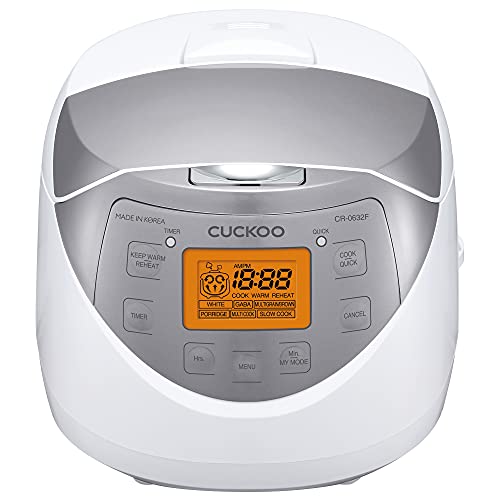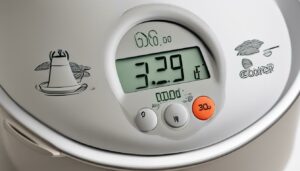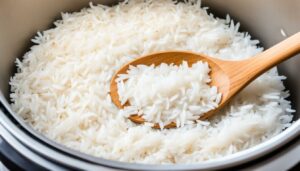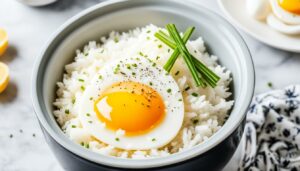In this article I will show you how to cook couscous in a rice cooker, which is easier than you might think. Couscous is an ancient grain that originated in North Africa, and it has been gaining popularity in the United States over the past few years. The beautiful thing about cooking couscous with a rice cooker is that there’s no need for any other kitchen appliances like pots or pans and you can get a tasty, nutritious snack in just a few minutes!
So, read on to learn more about this simple way of cooking great-tasting couscous without all of the work.
Table of Contents
What is Couscous?
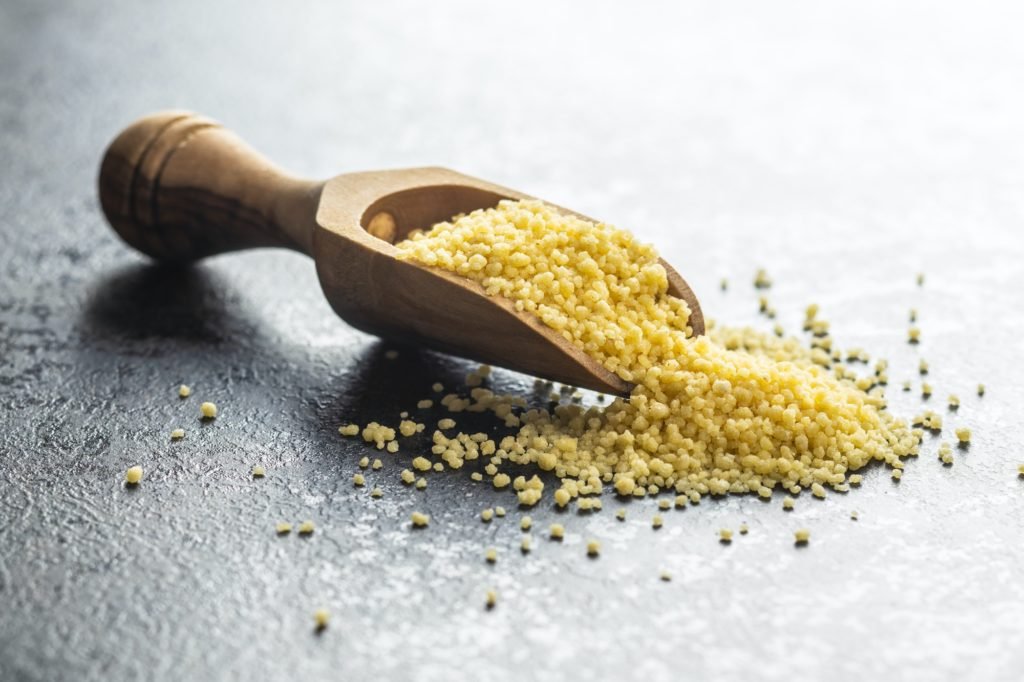
Couscous is a type of small, round granule made from wheat flour and water. It originates from North Africa where it’s traditionally served with lamb or goat stew. It has been gaining popularity in the United States over the past few years because it can be eaten like rice. The great thing about couscous is that it’s already cooked and ready to eat, making it an easy way for busy people to prepare a healthy meal.
Prices pulled from the Amazon Product Advertising API on:
Product prices and availability are accurate as of the date/time indicated and are subject to change. Any price and availability information displayed on [relevant Amazon Site(s), as applicable] at the time of purchase will apply to the purchase of this product.
Couscous is an amazing and versatile ingredient that can add flavor, texture, and water to any dish. With its light and fluffy texture, it absorbs flavors like a sponge, making it an excellent alternative to traditional rice or pasta side dishes. Plus, couscous is incredibly easy to prepare, and you can make it in a rice cooker in just a few minutes!
Not only is couscous a great addition to salads, stews, and soups, but it can also be served as a main dish or a side dish at your next dinner party with friends. You can experiment with different flavors and spices to make it even more delicious.
One of the best things about couscous is that it is a healthy and nutritious choice. It is naturally gluten-free and contains vitamins and minerals such as iron and magnesium. And since it cooks quickly, it retains more of its nutrients than larger grains like brown rice or quinoa.
Couscous is a healthy grain that can be substituted for rice and pasta. The granules are small enough to cook quickly, which means they will retain more of their nutrients than larger grains like brown rice or quinoa, although it is not as rich in fiber as other whole grains like brown rice or quinoa.
How to Cook Couscous
This really is simplicity itself.
1. Rinse the couscous under running water
2. Add 2 cups of water and a pinch of salt to the rice cooker
3. Place the couscous in an even layer on top of the steaming tray inside your rice cooker, then cover with its lid and set it to cook for 5 minutes
4. Turn off your rice cooker and let it sit for 10 more minutes before removing it from the heat source
5. Fluff up cooked couscous with a fork or spoon before serving
6. Enjoy!
Adding Flavors and Seasonings to Enhance Couscous
Adding flavors and seasonings to enhance couscous can take your dish to a whole new level of deliciousness. There are countless options to choose from, allowing you to customize your couscous to suit your tastes.
One popular choice is to incorporate herbs and spices. For example, you can add a combination of dried herbs like thyme, oregano, and basil to infuse your couscous with a fragrant and savory flavor. Alternatively, you can experiment with spices such as cumin, paprika, or turmeric to give your couscous a warm and aromatic twist. Don’t be afraid to get creative and mix different herbs and spices together to create your own unique flavor profile.
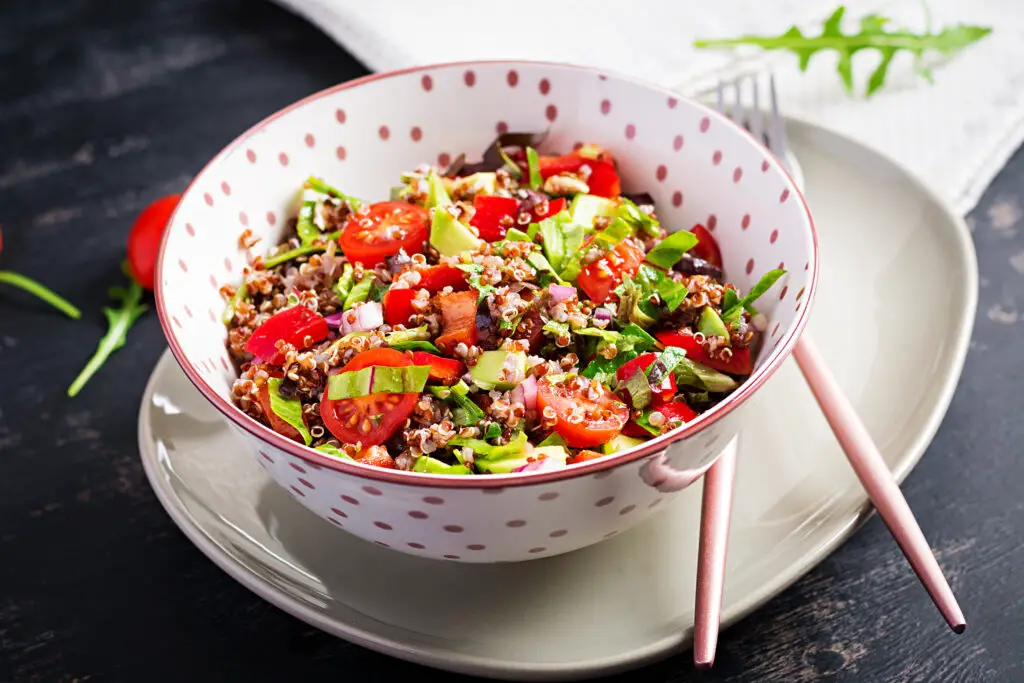
In addition to herbs and spices, you can also enhance your couscous with the addition of various ingredients.
For a burst of freshness, consider adding chopped vegetables like bell peppers, tomatoes, or cucumbers. These vibrant veggies will not only add color to your dish but also provide a satisfying crunch.
If you prefer a more indulgent flavor, you can incorporate ingredients like roasted garlic, caramelized onions, or sun-dried tomatoes. These savory additions will add depth and richness to your couscous, making it a truly satisfying and flavorful meal. Whether you choose to keep it simple with herbs and spices or get adventurous with a variety of ingredients, adding flavors and seasonings to your couscous will undoubtedly elevate its taste and make it a crowd-pleasing dish.
The Importance of Fluffing Couscous and How to Do It Properly
Fluffing couscous is an essential step in the cooking process that can greatly enhance the final texture and taste of the dish. When couscous is properly fluffed, it becomes light, fluffy, and separates into individual grains, creating a more appealing and appetizing presentation. Additionally, fluffing couscous helps to prevent clumping and ensures that each grain is evenly cooked and seasoned.
To properly fluff couscous, start by cooking it according to the package instructions. Once the couscous is cooked, use a fork to gently fluff the grains. This can be done by lightly stirring the couscous in a circular motion, breaking up any clumps that may have formed during cooking. Be careful not to overmix or press down too hard, as this can result in a mushy texture. Instead, use a light hand and gentle motions to separate the grains and create a fluffy texture. Fluffing couscous should be done just before serving to ensure that it maintains its light and airy consistency.
Measuring Water and Couscous Ratio, Including the Use of Broth
When cooking couscous, it is essential to measure the water and couscous ratio accurately. The correct ratio will ensure that the couscous is cooked to perfection, with the right texture and consistency. Generally, the standard ratio is one part couscous to one and a half parts water.
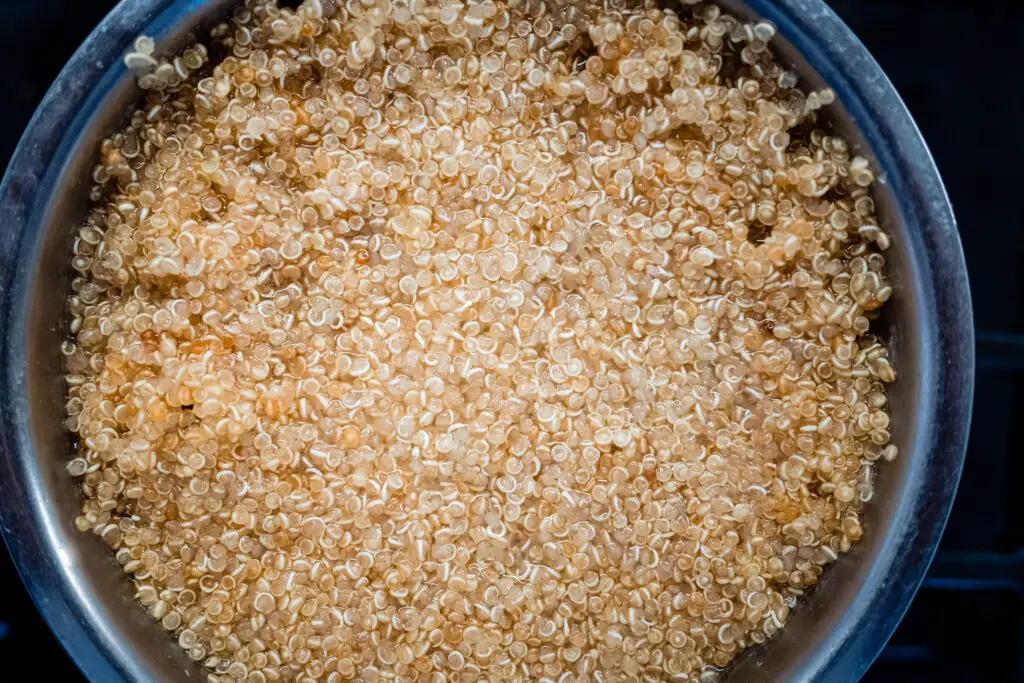
This means that for every cup of couscous, you will need one and a half cups of water. However, it is important to note that this ratio may vary depending on personal preference and the specific brand of couscous being used. Some people prefer a softer texture and may choose to use more water, while others prefer a firmer texture and may use slightly less water.
In addition to water, many people also like to use broth when cooking couscous. Broth adds flavor and depth to the dish, enhancing the overall taste. When using broth, it is important to adjust the water-to-couscous ratio accordingly. For example, if you decide to use one cup of broth instead of water, you may need to reduce the amount of water used to half a cup. This ensures that the couscous absorbs the right amount of liquid and does not become overly soggy. Experimenting with different ratios of water, broth, and couscous is a great way to find your preferred balance and create a delicious couscous dish.
How to Stop Couscous From Clumping
Ok, so it’s simple to cook but what if you find yourself frustrated with clumpy couscous? Well, don’t despair for here are some simple yet effective techniques to ensure your rice cooker couscous turns out light, fluffy, and absolutely delightful every single time.
- Measure with Precision: Start by measuring your couscous and water accurately. A common mistake is using too much or too little water, leading to undesired clumps. For perfect couscous, you should maintain a 1:1 ratio of couscous to water.
- If you’ve ever found yourself frustrated with clumpy couscous ruining your perfectly planned meal, fret not! We have some simple yet effective techniques to ensure your couscous turns out light, fluffy, and absolutely delightful every single time.
- Measure with Precision: Start by measuring your couscous and water accurately. A common mistake is using too much or too little water, leading to undesired clumps. For perfect couscous, maintain a 1:1 ratio of couscous to water.
- Fluff it Up: After cooking your couscous, resist the urge to dive straight into serving. Instead, fluff it up gently with a fork. This step will loosen the grains and separate them, preventing any potential clumping.
- Drizzle Some Oil: Before cooking, consider adding a drizzle of olive oil or any other preferred cooking oil to the couscous. The oil acts as a natural barrier, reducing the chances of the grains sticking together.
- Opt for the Steam Method: If you’re looking for the ultimate fluffy couscous, try the steam method. Place the couscous in a colander over a pot of simmering water, cover it with a lid, and let the steam work its magic. This technique results in perfectly tender and separate grains.
- Add a Pinch of Salt: Enhance the couscous’s flavor while preventing clumps by adding a pinch of salt to the water before cooking. The salt helps to break down any potential starch buildup, keeping the grains loose and easy to fluff.
- Mind the Cooking Time: Overcooking couscous is a surefire way to end up with a sticky mess. Follow the package instructions carefully, and remember that couscous cooks relatively quickly. Proper timing is essential for achieving that desirable light texture.
- Let it Rest: Once your couscous is cooked, allow it to rest for a few minutes before fluffing it up. This resting period allows the grains to settle, making it easier to separate them without clumps.
- Be Gentle: When fluffing the couscous, use a light hand and avoid pressing down too hard. The gentle approach ensures the grains remain separate, maintaining a delightful texture.
- Toast it for Extra Fluffiness: For a delightful nutty flavor and extra fluffiness, consider toasting your couscous before cooking. Simply heat a dry pan and toss the couscous until it turns golden brown. Then proceed with your regular cooking method.
- By following these tips, you’ll become a couscous connoisseur, consistently creating dishes that are not only visually appealing but also bursting with flavor and delightful texture. Say goodbye to clumpy couscous, and embrace the joy of perfectly fluffy grains that will impress your guests and leave your taste buds dancing with delight!
By following these tips, you’ll your couscous dishes will not only be visually appealing but also bursting with flavor and delightful texture.
The Health Benefits of Couscous
In addition to being easy to cook, couscous also offers a range of health benefits. It is a good source of complex carbohydrates, which provide a steady release of energy and help to keep you feeling full for longer.
This makes it a great option for those looking to maintain a healthy weight or manage their blood sugar levels.
Vitamins and Minerals in Couscous (per 100g):
- Calories: 120
- Water: 72%
- Protein: 4.4 grams
- Carbs: 21.3 grams
- Sugar: 0.9 grams
- Fiber: 2.8 grams
- Fat: 1.9 grams
Minerals:
- Manganese: Essential for metabolism, growth, and development.
- Phosphorus: Essential for bone health and the maintenance of various body tissues.
- Copper: Important for heart health.
- Folate (B Vitamin): Essential for cell function, tissue growth, and particularly important for pregnant individuals.
- Iron: Performs many important functions, such as transporting oxygen in red blood cells.
- Magnesium: Important for many processes in the body.
- Zinc: Participates in many chemical reactions in the body.
Couscous is also low in fat and contains no cholesterol, making it a heart-healthy choice.
It is rich in fiber, which aids in digestion and can help to prevent constipation, and is a good source of several essential nutrients, including iron, magnesium, and B vitamins. These nutrients are important for maintaining overall health and wellbeing. So, not only is couscous delicious, but it is also a nutritious addition to your diet.
Couscous Mediterranean Salad
This is a simple, and very tasty dish served best during the hot summer months. It works well with almost any main but is especially delicious with lamb.
Follow the main steps for cooking your couscous in a rice cooker outlined above then the tanginess of this recipe comes from the combination of lemon zest, red wine vinegar, and herbs whisked with extra virgin olive oil.
The salad dressing is just enough to coat all the ingredients; if you want more for serving on the side, simply double it!
If there are any leftovers in your bowl after service at your table add a slice or two of fresh lemon before eating.
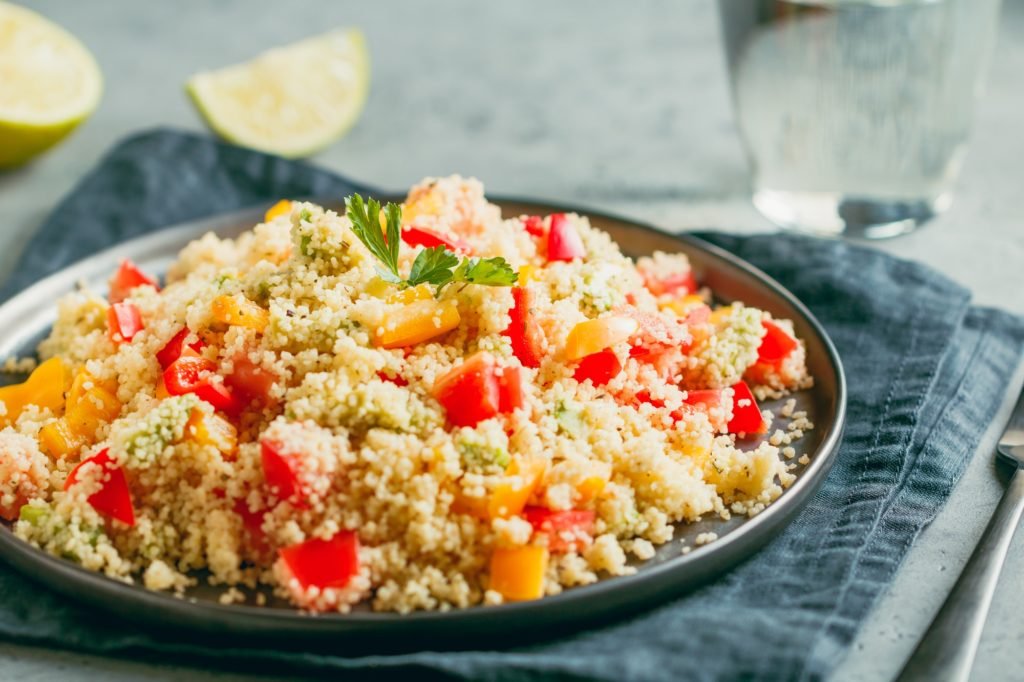
I start by chopping up red bell peppers, cucumbers, tomatoes, and kalamata olives.
Next, add them to a bowl with feta cheese (to help it melt) along with some fresh herbs like parsley or basil.
Next up, the dressing: olive oil mixed in whole grain mustard brings that Mediterranean flavor, while adding lemon juice helps brighten everything up!
Finally, mix in garbanzo beans for protein, and you’re done—this flavorful dish can be served cold or hot!
The benefits of adding couscous to your diet
Incorporating couscous into your diet can provide many benefits for your overall health and well-being.
Because couscous is a nutrient-dense grain that is naturally gluten-free, this makes it a great alternative to traditional wheat-based products.
It’s also a great source of protein and fiber, which can help you feel full and satisfied for longer periods of time.
Couscous is also rich in vitamins and minerals such as iron and magnesium, which are important for maintaining healthy blood cells and a strong immune system, and because couscous cooks quickly, it retains more of its nutrients than larger grains like brown rice or quinoa.
These are all good reasons why adding couscous to your meals is beneficial, for not only can you increase your intake of healthy nutrients but you can also enjoy a delicious and versatile foodstuff.
Some FAQs
Is couscous a grain or pasta?
Couscous is indeed a grain, specifically a form of pasta. It belongs to the same family as other grains and durum wheat semolina, all of which are milled grains that contain gluten.
Although couscous is traditionally used in North African cuisine, it has become popular in many other parts of the world too, due to its light and fluffy texture and relatively easy-to-prepare character.
Depending on where you are in the world, it can be steamed or boiled; either way, it makes an incredibly versatile and nutritional ingredient suitable for salads, soups, and stews alike. With its pleasantly subtle nuttiness and glorious agility when it comes to adapting a variety of flavors and tastes, couscous stands out as an excellent addition to any kitchen pantry.
Which is healthier, brown rice or couscous?
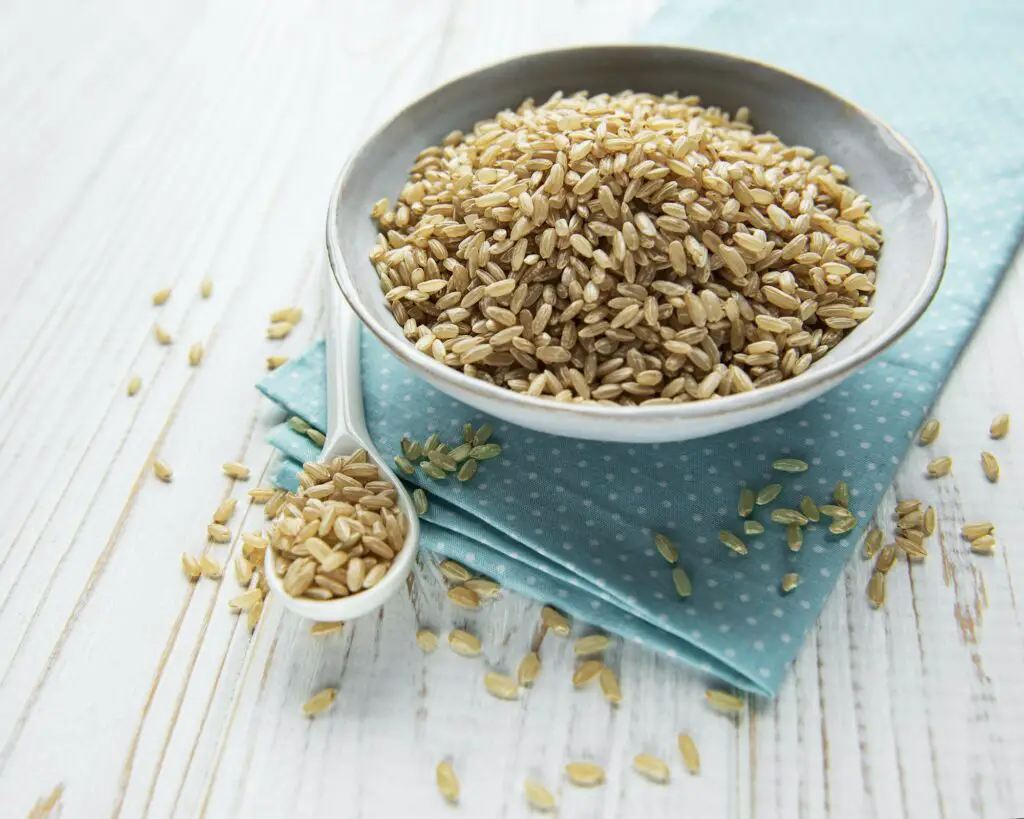
From a health perspective, brown rice is the clear winner out of these two grains. Brown rice offers a considerable amount of fiber, B-vitamins, iron, and magnesium which can help support energy levels and the immune system. In comparison, couscous contains comparable levels of iron but fewer vitamins plus far less fiber than brown rice. Though couscous may be processed in different ways, it is still manufactured and it doesn’t necessarily have fewer calories than some believe; they are both similar with just over 100 coes per serving. All in all, brown rice wins out on nutrition content though both are healthy choices to add to your diet.
Is couscous good for high blood pressure?
Many studies have shown that couscous can be beneficial for those with high blood pressure.
This nutrient-dense grain is naturally low in sodium, which is an important factor in controlling high blood pressure.
The magnesium and potassium found in couscous can actually help to relax the arteries and decrease the stiffness of blood vessels, allowing greater flow and resulting in lower blood pressure.
When buying packaged couscous, look for varieties labeled “low sodium” or “no added salt,” as this will further ensure you are getting an optimal benefit from this healthy whole grain. For best results, pair couscous with healthy fats like nuts, seeds, and olive oil for a meal that may go a long way towards improving cardiovascular health.
Is couscous as good as quinoa?
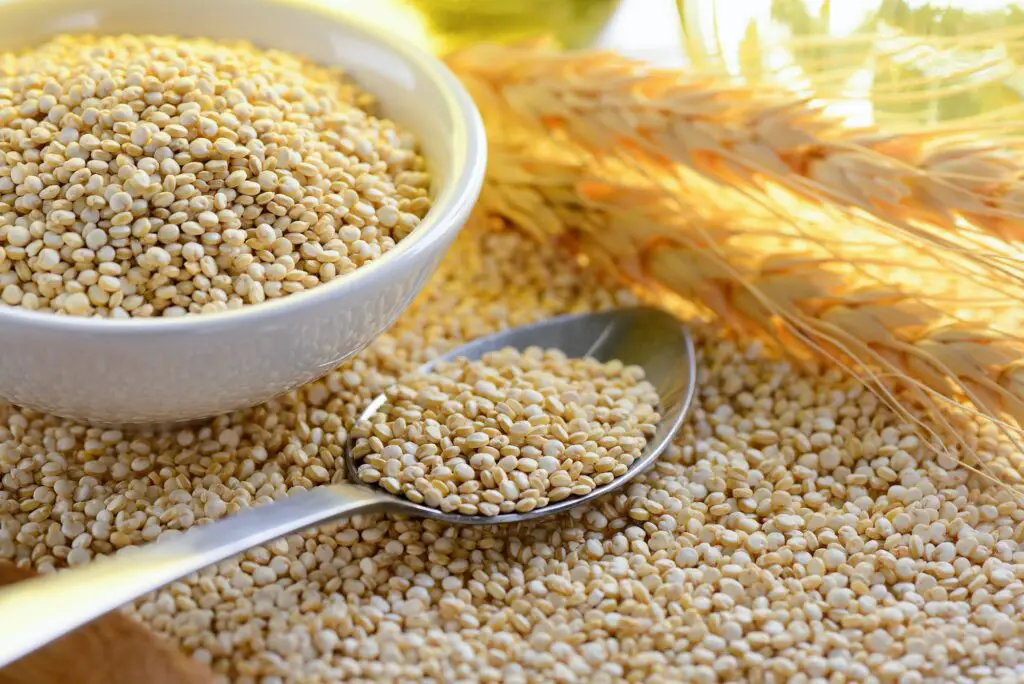
We now know what couscous is—a traditional North African staple that’s cherished for its unique texture and versatility. We also know that it’s made from durum wheat semolina, giving it a fluffy and slightly chewy consistency, and because couscous is like a blank canvas, ready to soak up flavors and blend seamlessly with various ingredients, it makes a fantastic addition to countless dishes.
But what about its rival, quinoa? It’s an ancient superfood hailing from South America. This little powerhouse is known for its exceptional nutritional profile, packing a punch of protein, fiber, and essential nutrients. Quinoa’s delicate, nutty taste adds a wonderful depth to salads, bowls, and even as a wholesome substitute for rice.
Are they comparable?
Well, it depends on what you’re looking for! If you want a grain that easily adapts to different flavors and cuisines, couscous is your loyal companion. Its fluffy texture and quick cooking time make it a time-saving favorite for busy days.
But if you’re all about boosting your meals with superb nutrition, quinoa steals the show! With its impressive protein content and wholesome goodness, quinoa offers a guilt-free and delightful way to nourish your body.
Q: How do I cook couscous in a rice cooker?
A: To cook couscous in a rice cooker, you can follow these simple steps:
Q: What type of couscous can I use in a rice cooker?
A: You can use any type of couscous in a rice cooker, including pearl couscous (also known as Israeli couscous) or regular couscous pearls.
Q: What is the measurement of couscous and water for cooking?
A: A common ratio is 1 cup of couscous to 1 ¼ cups of water.
Q: Can I use a rice cooker’s white rice setting to cook couscous?
A: Yes, you can use a rice cooker’s white rice setting to cook couscous.
Q: Can I cook couscous in a slow cooker?
A: While it is possible to cook couscous in a slow cooker, using a rice cooker yields better results.
Q: How do I add the couscous to the rice cooker?
A: Once the water is boiling in the rice cooker, simply add the couscous to the bowl of the rice cooker and stir.
Q: How long does it take to cook couscous in a rice cooker?
A: Cooking couscous in a rice cooker usually takes around 15-20 minutes.
Q: Can I make couscous in a rice cooker without using a stovetop?
A: Yes, making couscous in a rice cooker allows you to cook it without needing a stovetop.
Q: Can I use broth instead of water to cook couscous?
A: Yes, you can use broth such as chicken broth to add more flavor to your couscous.
Q: Can I add other ingredients to the couscous in the rice cooker?
A: Absolutely! You can add additional ingredients such as chopped vegetables, herbs like cilantro, or even sautéed shallots to enhance the flavor of your couscous.
And, best of all you can cook quinoa in a rice cooker just as easily as couscous – what’s not to love?
Conclusion
Cooking couscous may seem intimidating at first but using this recipe you’ll have no problem cooking your own batch of delicious couscous! You can enjoy your couscous as is or with an assortment of vegetables, sauces, and other toppings.
Grab a Bargain on a New Rice Cooker For Your Couscous Today
- UNIQUE 10 MENU OPTIONS: Enjoy popular menu options such as white rice, multigrain/brown rice and porridge as well as versatile options such as steam and slow cook
- IDEAL 6 CUP CAPACITY: The 6-cup (12 cups cooked) rice cooker provides the perfect serving amount for small gatherings or small to medium sized families
- SMART MICOM RICE COOKER: Enjoy effortless cooking as the smart cooking algorithm is designed to automatically cook delicious rice every time!
- CUSTOMIZED RICE COOKING: Whether you enjoy sticky rice, soft rice, sweet rice, or savory rice, My Mode allows you to take control of your cooking with the 16 unique rice flavor and texture options
- CLEAN & FRESH: Keep your rice cooker clean and your rice tasting fresh with the removable nonstick inner pot, detachable inner lid, auto clean function, and excess water drainage dish
Prices pulled from the Amazon Product Advertising API on:
Product prices and availability are accurate as of the date/time indicated and are subject to change. Any price and availability information displayed on [relevant Amazon Site(s), as applicable] at the time of purchase will apply to the purchase of this product.


